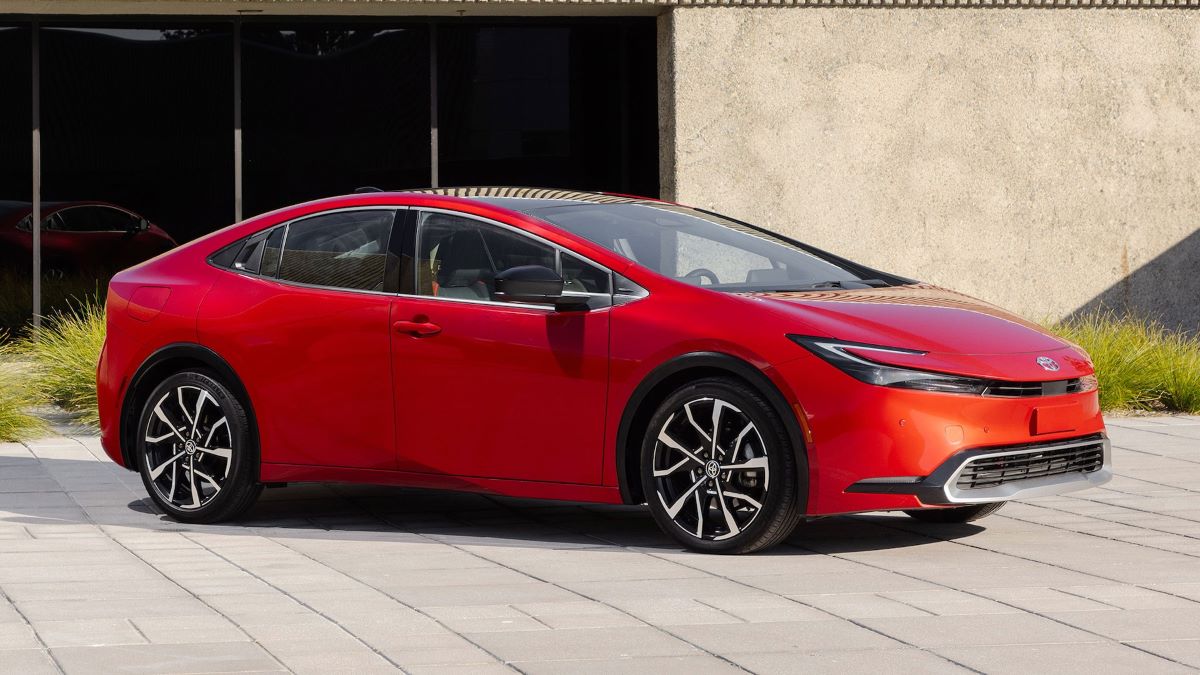Spark plug accessibility might not be the flashiest aspect of car ownership, but it plays a significant role in maintenance costs, DIY feasibility, and overall long-term satisfaction. For some vehicles, replacing spark plugs is a simple afternoon job requiring basic tools and minimal time.
For others, it’s a labor-intensive ordeal involving removed engine covers, intake manifolds, or even the partial disassembly of front-end components. The gap between these two extremes can mean the difference between a $50 DIY project and a $600 bill from the mechanic.
In this article, we explore both ends of that spectrum. First, we’ll highlight five cars where spark plugs are easily accessible, making them ideal for weekend wrenchers and budget-conscious drivers. These models prioritize smart engine layouts that simplify one of the most common maintenance tasks.
Then, we’ll turn to five cars where changing spark plugs can be a real headache—vehicles that demand hours of labor, specialized tools, or even engine lifts just to complete a basic tune-up. These cars remind us that not all maintenance is created equal, and that performance or packaging often comes at the cost of serviceability.
Whether you’re considering a new purchase or simply trying to plan your next tune-up, understanding spark plug accessibility can save you time, frustration, and money.
Also Read: 5 Cars with Bulletproof Electronic Systems and 5 That Short Out Easily
5 Cars With Easily Accessible Spark Plugs
For many car owners, routine maintenance is part of the ownership experience, especially when it comes to something as essential as spark plug replacement.
Spark plugs are small but critical components that ensure proper engine combustion. They need to be replaced every 30,000 to 100,000 miles depending on the vehicle and plug type. However, the time and effort it takes to do this task can vary drastically from car to car.
Some automakers design their engine bays with accessibility in mind, making spark plug replacement a quick, stress-free process. These vehicles are a dream for home mechanics and DIYers—requiring only a ratchet, socket extension, and a bit of patience to complete the job in under an hour.
Even if you choose to pay a professional, labor costs for these jobs are typically minimal, reducing your long-term maintenance expenses.
This section focuses on five cars that make spark plug changes exceptionally easy. Whether you’re looking to save on shop bills or prefer to do your own basic maintenance, these vehicles deliver both practicality and reliability.
Each one features a straightforward engine layout, minimal interference from other components, and a plug location that doesn’t require removing half the engine to access.
We’re highlighting these cars not just because they’re easy to work on—but because they represent a design philosophy that respects the owner’s time and effort.
In an age where more components are being buried under layers of plastic shrouds and electronics, these vehicles stand out for keeping things simple where it counts.
If you’re shopping for a car with maintenance in mind, or simply wondering which vehicles make spark plug changes a non-issue, this list is for you. Let’s take a closer look at five vehicles where plug accessibility is so easy, you might even look forward to the next tune-up.
1. 2003–2011 Honda Element
The Honda Element, produced from 2003 to 2011, is one of the most DIY-friendly vehicles on the road, and that reputation extends to spark plug maintenance.
Built on the CR-V platform and powered by the legendary 2.4-liter i-VTEC inline-4 engine (K24A1 or K24A8), the Element was designed with accessibility and function in mind—a trait that makes spark plug replacement remarkably simple.
On the Element, the spark plugs are located right on top of the engine under a small plastic engine cover. Once that cover is removed—just a few bolts—the ignition coil packs and spark plugs are easily accessible in a straight line across the top.
No intake manifold removal, no special tools, and no awkward angles. Even first-time DIYers can usually complete the job in 30 to 45 minutes, using only a ratchet, extension, and spark plug socket.
This engine only requires four plugs, and they’re standard-sized, with wide availability of OEM or aftermarket options from NGK and Denso.
Thanks to the engine’s naturally aspirated layout and vertical orientation, there’s no obstruction from surrounding components, and everything is visible and reachable from the top of the engine bay.
Even better, the Element’s upright hood design and spacious engine compartment give you ample room to work without cramped conditions. It’s also positioned at a comfortable height, so you’re not crouching or leaning awkwardly to get the job done.

For many owners, this ease of maintenance is a big part of why the Element remains such a loyal fan favorite more than a decade after production ended.
In a time when even basic maintenance tasks on modern vehicles can require multiple steps and complex disassembly, the Honda Element is a refreshing example of thoughtful engineering. It’s a vehicle that proves simple can still be smart.
2. 1999–2004 Jeep Grand Cherokee (4.0L Inline-6)
The 1999–2004 Jeep Grand Cherokee equipped with the legendary 4.0-liter inline-6 engine is a prime example of how older engineering can make basic maintenance refreshingly simple.
This engine, a direct descendant of the AMC straight-six from decades prior, is one of the most accessible and serviceable powerplants ever put into a mass-market SUV—and spark plug changes are a textbook example.
The inline-6 layout contributes significantly to the ease of spark plug access. Instead of a V6 or V8 where plugs are buried along the sides of a cramped engine bay, all six spark plugs on the 4.0L sit in a straight row along the passenger side of the engine block.
There’s no intake manifold to remove, no interference from transverse-mounted components, and no need for specialty tools. The plugs are all right there in front of you.

With the coil rail or individual ignition coils removed (depending on the year), the plugs can be swapped out in under an hour—even by novice DIYers.
The space around the engine is generous, and the plug holes are wide enough to accommodate most socket extensions without issue.
Adding to its DIY charm, the 4.0L engine bay leaves plenty of working space thanks to its body-on-frame, longitudinal engine layout. That means even large hands or less nimble fingers won’t struggle to maneuver sockets and plugs into place.
Spark plugs for this engine are inexpensive and widely available from major brands like Champion, Autolite, and NGK.
This ease of maintenance has endeared the Grand Cherokee and its 4.0L engine to off-roaders and long-term Jeep loyalists alike.
It’s a vehicle built for ruggedness and reliability, and its mechanical simplicity ensures you can keep it running without needing to visit a shop for every tune-up.
If your priorities include serviceability and simplicity, the Grand Cherokee 4.0L is one of the best-used SUVs around.
3. 2012–2018 Ford Focus (2.0L I4)
The third-generation Ford Focus, particularly those equipped with the naturally aspirated 2.0-liter inline-4 engine (code name: Duratec Ti-VCT GDI), is a standout in the compact segment for both drivability and ease of maintenance.
Among its many service-friendly features, spark plug accessibility is especially commendable—making this a solid choice for DIYers and budget-conscious owners.
In this generation, the spark plugs are located directly on top of the engine, under a plastic engine cover that’s easily removed. Once exposed, each plug sits beneath an individual coil-on-plug setup.
The entire process of replacing them involves disconnecting a few coil connectors, unbolting the coils, and using a spark plug socket with an extension to remove the plugs. No intake manifold removal, no awkward reaches, and no complicated disassembly—just clean, open access.
Thanks to the compact inline-4 layout, everything is located along the top center of the engine, and the surrounding engine bay provides plenty of clearance.
This straightforward orientation allows even beginners to complete a full spark plug replacement in about 30–45 minutes. The Focus uses standard-size 14mm thread plugs, which are widely available and affordable.
Ford also provides clear spark plug service intervals and torque specifications in the owner’s manual, reinforcing how maintenance-friendly this vehicle was designed to be.
Since the 2.0L naturally aspirated engine lacks turbochargers or intercoolers, there’s even less clutter under the hood—resulting in a neater, less intimidating workspace for those performing at-home maintenance.

With labor costs rising at professional shops, especially for European compacts and turbocharged models, the Ford Focus provides a welcome alternative. It allows owners to save on spark plug replacements without sacrificing engine accessibility or quality of engineering.
For drivers seeking low-cost upkeep and straightforward DIY jobs, the 2012–2018 Focus deserves serious consideration—especially for tune-ups that don’t involve crawling under the car or removing major engine components.
4. 2004–2009 Toyota Prius (1.5L Hybrid I4)
The second-generation Toyota Prius (2004–2009) is well known for its fuel efficiency and hybrid innovation, but it also earns praise for its ease of maintenance—particularly when it comes to spark plug accessibility.
Despite being a hybrid, the Prius keeps its internal combustion engine (a 1.5-liter inline-4 known as the 1NZ-FXE) remarkably simple and serviceable, a rarity among hybrid systems of the era.
Accessing the spark plugs on the 1NZ-FXE engine is surprisingly straightforward. They sit vertically on the top of the engine under a modest plastic cover. Remove that, and the ignition coils are exposed and easily detached with a 10mm socket.
Once the coils are out, the plugs can be reached directly with a spark plug socket and an extension. There are no buried components, intake runners, or firewall constraints in the way. For many, the entire spark plug replacement process takes less than 45 minutes, even for someone with little mechanical experience.
Adding to its accessibility, the Prius engine bay is roomy by hybrid standards, thanks in part to its compact engine and transverse layout. Toyota’s engineering here is minimalistic and functional—ideal for long-term reliability and cost-effective servicing.
The hybrid battery and electronics are isolated well enough that they don’t complicate simple engine maintenance tasks like this.

Toyota recommends long-life iridium spark plugs for this engine, which last up to 120,000 miles—meaning spark plug jobs are rare but easy when they do occur. Because the job is so simple, owners can confidently tackle it themselves and avoid high dealership labor charges.
In a vehicle often praised for its technology, the Prius also reminds us that smart engineering doesn’t have to mean complexity. For hybrid car owners seeking a hassle-free maintenance experience, the second-gen Prius delivers convenience alongside its legendary MPG.
5. 1994–2001 Acura Integra (B18B1/B18C1 Engines)
The third-generation Acura Integra, produced from 1994 to 2001, is an icon in the compact sports car world—not only for its sharp handling and spirited performance but also for its exceptional serviceability.
Equipped with either the B18B1 (non-VTEC) or B18C1 (VTEC) inline-4 engines, this car remains a favorite among enthusiasts who enjoy getting their hands dirty. Spark plug changes on the Integra are about as easy as they come.
The engine’s layout is clean, purposeful, and extremely accessible. The four spark plugs are located right on top of the engine, seated vertically in the cylinder head.
To reach them, all that’s required is removing the plug wires or ignition coils (depending on the trim/year) and using a spark plug socket with a short extension. There are no obstructing intake manifolds, no engine covers, and no tight clearances that require contortionist-level maneuvers.
The engine bay is relatively spacious for a compact car, allowing tools to maneuver freely. Even if you’ve never turned a wrench before, this job is straightforward and low-risk—making the Integra a perfect “first DIY” car for maintenance beginners.
It’s entirely possible to swap all four plugs in 30 minutes or less, with common tools and minimal effort.
What further sets the Integra apart is the culture surrounding it. Because of its popularity in the tuning world, there’s an abundance of guides, tutorials, and videos explaining every step of the spark plug replacement process.

Additionally, spark plug compatibility with NGK or Denso is well documented, and most parts stores stock everything you need.
The Acura Integra proves that performance cars don’t have to be difficult or expensive to maintain. It’s a shining example of when engineering meets practicality, offering drivers a thrilling ride and the peace of mind that routine tasks won’t break the bank—or their knuckles.
5 Cars That Take Hours To Change Spark Plugs
While spark plugs are small components, replacing them isn’t always a small task—especially in modern vehicles where design priorities often put accessibility last.
In the quest for more compact engine bays, additional power, and sleeker designs, many automakers have made basic maintenance far more complicated than it needs to be.
The unfortunate result? For some vehicles, spark plug replacement can become a labor-intensive, time-consuming ordeal that requires professional tools, specialized knowledge, or even engine disassembly.
This section focuses on five vehicles where changing spark plugs is a real challenge, often taking two to four hours or more, even for trained technicians. These aren’t just minor inconveniences; they’re examples of how poor engine layout and overpacked bays can turn a simple job into a full-blown service event.
Whether it’s because of transverse V6 engines buried under intake manifolds, turbocharged setups crammed into tight corners, or luxury designs prioritizing aesthetics over serviceability, the result is the same: frustration, added cost, and a strong incentive to avoid DIY maintenance.
We’re spotlighting these cars not to shame their performance or quality, but to inform buyers and owners about what they’re getting into when maintenance day arrives.
Some of these vehicles deliver excellent power and prestige—but at the price of convenience. Others are surprisingly difficult despite being relatively common or affordable, catching owners off guard at the dealership or garage.
If you’re someone who prefers to maintain your own vehicle or simply wants to avoid excessive labor charges, these five models are cautionary tales.
Understanding the time and effort required for something as basic as spark plugs can help you make a smarter buying decision—or at least brace yourself for what’s involved.
Let’s look at the cars that make you work (and wait) for every ignition spark.
1. 2007–2012 Nissan Altima (3.5L V6 – VQ35DE)
The 2007–2012 Nissan Altima with the 3.5-liter VQ35DE V6 engine is an example of how a powerful, well-regarded engine can come with an inconvenient tradeoff: nightmarish spark plug access.
While the VQ engine is known for its reliability and strong performance, it’s also infamous in the maintenance world for the amount of labor it demands for seemingly simple tasks—especially when housed in the tight engine bay of a front-wheel-drive sedan like the Altima.
In this layout, the rear bank of spark plugs is located directly against the firewall, behind the engine, making them nearly impossible to reach without major disassembly. To access them, you’ll need to remove the upper intake manifold, multiple hoses, sensors, and often the throttle body.

This isn’t a quick, casual DIY job—it’s a multi-hour undertaking even for experienced mechanics. Some shops quote 2.5 to 4 hours of labor just to change all six plugs.
Even worse, this cramped space leaves very little room to maneuver tools, so flexible extensions and magnetic sockets become a necessity. Mistakes like dropped bolts or cross-threaded plugs are common if the job isn’t approached with care and the right equipment.
Why did it end up like this? The transverse V6 layout in a midsize sedan forces the engine to be packed in tightly, with the intake manifold covering the rear cylinder head. It’s a common issue with front-wheel-drive V6 cars, but the Altima’s packaging is particularly unforgiving.
For owners hoping to maintain their Altima themselves, this job is a turning point—either you commit several hours to the challenge or hand it off to a shop and pay upward of $300 or more for labor. That’s a steep price for what should be a routine tune-up.
2. 2011–2017 Volkswagen Passat (2.0T Turbocharged I4 – EA888 Engine)
The Volkswagen Passat equipped with the 2.0-liter turbocharged EA888 inline-4 engine from 2011 to 2017 showcases how modern turbocharged engines can complicate what should be routine maintenance.
This engine is lauded for its performance and efficiency but is notorious for difficult spark plug access that demands patience, skill, and sometimes costly professional service.
Unlike naturally aspirated engines, the turbocharger and associated plumbing create a congested engine bay. The spark plugs sit deep within the cylinder head, under the intake manifold, surrounded by various sensors, hoses, and wiring harnesses.
To access the plugs, the intake manifold and turbocharger heat shield must be removed, along with various ancillary components. This process can take two to three hours or more, even for experienced mechanics.
The tight spaces leave minimal room for tool maneuvering, requiring special spark plug sockets with swivel joints and extensions.
Additionally, care must be taken during reinstallation to avoid damaging the manifold gaskets or turbocharger connections, which can lead to expensive repairs if mishandled.
For DIY enthusiasts, this task is daunting. The complexity discourages many from attempting it themselves, and professional labor rates can push the cost well above $400.

Despite these challenges, the EA888 engine remains popular due to its robust power delivery and efficiency. However, the tradeoff is clear: owners must budget more time and money for spark plug replacements compared to simpler engine designs.
This example highlights a growing trend in automotive design where performance and emissions take precedence, sometimes at the expense of routine maintenance accessibility.
3. 2010–2015 BMW 3 Series (N54 3.0L Twin-Turbo I6)
The BMW 3 Series, specifically models equipped with the N54 3.0-liter twin-turbocharged inline-6 engine, is renowned for its smooth power delivery and thrilling performance. However, underneath that refined exterior lies a maintenance headache: spark plug replacement is a notoriously labor-intensive job.
The N54 engine’s tight, transverse-mounted layout places the rear bank of spark plugs buried beneath the intake manifold and turbocharger piping, deep inside the engine bay.
Accessing these plugs requires removing multiple components, including the intake manifold, coil packs, and various sensors.
This process is complicated by the presence of turbochargers, intercooler piping, and numerous vacuum and wiring lines.
The result is a labor time estimate ranging from 3 to 4 hours for a spark plug change, often requiring special tools and extensive engine disassembly.
The plugs themselves are typically more expensive, as BMW uses high-performance iridium plugs designed to last longer but at a premium price.
Many BMW owners rely on professional technicians for this service due to the complexity, leading to high labor costs often exceeding $500 just for the plug replacement.

Attempting this as a DIY project without proper knowledge and tools is discouraged, as errors can lead to engine damage or costly repairs.
While the N54 engine delivers exceptional driving dynamics, its maintenance demands serve as a reminder that high-performance engineering sometimes comes with trade-offs in routine serviceability.
4. 2009–2014 Audi A4 (2.0T Turbocharged I4 – EA888 Gen 1)
The Audi A4 equipped with the first-generation EA888 2.0-liter turbocharged inline-4 engine (common from 2009 to 2014) is another example where maintenance convenience took a backseat to performance and packaging.
Despite being a relatively small four-cylinder engine, the spark plug replacement job on this car is surprisingly complicated and time-consuming.
This engine uses a transverse layout with the spark plugs located beneath the intake manifold and ignition coils. Gaining access requires removing the intake manifold, throttle body, and multiple hoses and wiring harnesses.
The turbocharger and its associated plumbing further crowd the engine bay, limiting working space. Mechanics often face a cramped and awkward working environment.
The labor time to change all four spark plugs on this Audi typically ranges from 2 to 3 hours, depending on the shop and technician skill.
The process requires careful disassembly and reassembly to avoid damaging delicate components, and replacing intake manifold gaskets is commonly recommended during the service, adding to the time and cost.

For Audi owners, this means spark plug changes are not only more expensive in parts but also in labor, sometimes totaling $400 or more. DIY attempts are discouraged unless you have advanced mechanical experience and specialized tools.
This situation is a prime example of how modern turbocharged, compact engines with complex intake and exhaust layouts can make routine maintenance far less straightforward than in naturally aspirated engines with simpler designs.
5. 2013–2019 Subaru WRX/STI (EJ25 Turbocharged Flat-4 Engine)
The Subaru WRX and STI models equipped with the EJ25 2.5-liter turbocharged flat-4 engine are celebrated for their rally-inspired performance and all-wheel-drive capability.
However, beneath the hood, this engine’s boxer layout creates unique challenges—particularly when it comes to spark plug replacement.
Unlike inline or V-shaped engines, the flat-four design means spark plugs are positioned horizontally on either side of the engine.
While this can improve balance and lower the center of gravity, it also means the plugs are tucked into very tight, hard-to-reach spaces close to the suspension components and firewall. The intake manifold and turbocharger components further restrict access.
Replacing the spark plugs typically involves removing the intake manifold, turbo piping, and sometimes even components of the intercooler system. The job is not only time-consuming but also technically demanding, often requiring 3 to 5 hours of labor, depending on the mechanic’s experience.

Additionally, the EJ25’s ignition coils are somewhat fragile and can be tricky to remove without damage. Mistakes during this service can lead to costly repairs, so many owners opt for professional service rather than attempting DIY.
While the Subaru WRX/STI offers thrilling performance and a unique engine design, these benefits come with a significant maintenance tradeoff—making spark plug replacement one of the more expensive routine services on these models.
Spark plug replacement is one of the most fundamental maintenance tasks for any gasoline engine. Yet, as we’ve explored, the ease or difficulty of this job varies dramatically across different vehicles. For some cars, like the Toyota Prius, Honda Civic, or Acura Integra, the spark plugs are designed with accessibility in mind.
This allows owners and mechanics to perform replacements quickly, efficiently, and often affordably, saving time and labor costs. Vehicles with such practical engine layouts encourage DIY maintenance, lower long-term ownership costs, and generally contribute to a more satisfying ownership experience.
On the other hand, modern engineering trends and performance-focused designs have made spark plug replacement a much more complex endeavor in many popular cars.
Turbocharged engines, compact packaging, and tight engine bays—exemplified by vehicles like the Nissan Altima V6, BMW N54, and Subaru WRX—create significant challenges. These cars often require extensive disassembly, specialized tools, and experienced technicians to complete the task safely and correctly.
As a result, owners face higher labor costs, longer service times, and increased potential for repair complications if attempted without proper knowledge.
Understanding these differences is essential for prospective buyers and current owners alike. If ease of maintenance and lower service costs matter to you, choosing a vehicle with easily accessible spark plugs can pay dividends over years of ownership.
Conversely, if you prioritize performance or certain features, be prepared for more involved—and expensive—spark plug replacements.
Ultimately, spark plug accessibility is a telling example of how automotive design choices impact everyday maintenance. It reminds us that the most thrilling engine under the hood can sometimes come with hidden costs beneath it.
Being informed about these realities empowers owners to plan accordingly, budget wisely, and enjoy their vehicles without unexpected service frustrations.
Also Read: 5 Cars That Don’t Suck in LA Traffic and 5 That Are a Nightmare

